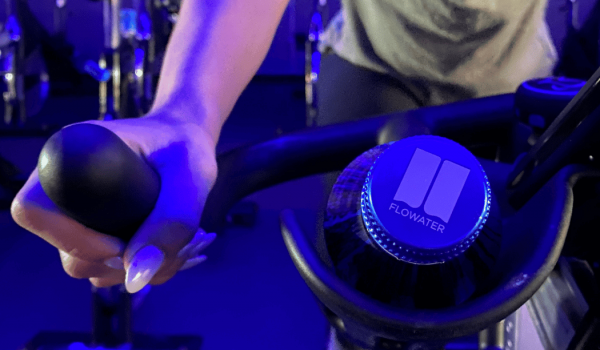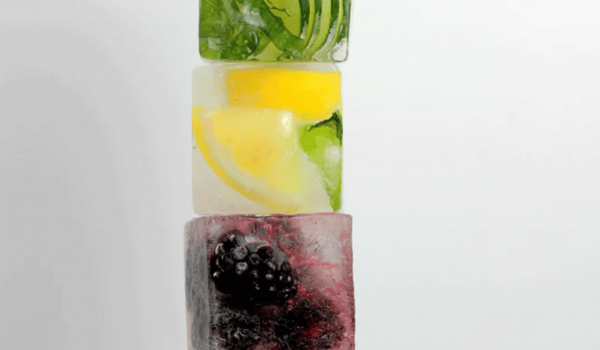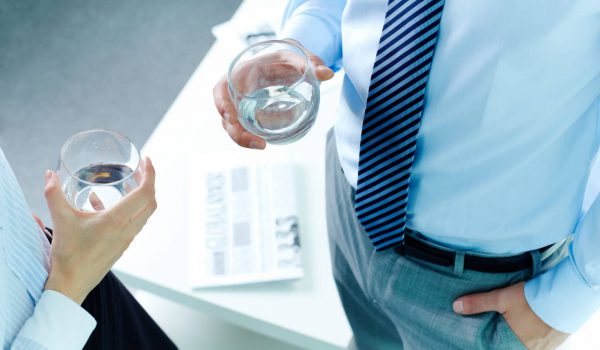Not all tap water is created equally. Since it comes from different sources and is treated in various ways, the quality of water one city system receives can vary considerably from what is used in the next city or state over. With that being said, there is one big category of difference often referred to when talking about what comes out of the faucet, and that’s hard vs soft water.
The difference between hard and soft water is determined by the amount of magnesium and calcium the water contains. These minerals affect how hard or soft the water will be. Alternatively, soft water typically has a higher concentration of sodium. While magnesium, calcium, and sodium are beneficial to have present in water, it requires finding a good balance.
The hardness or softness of your building’s water affects the accessibility of it in many ways, including making it enjoyable for people to drink. Hard vs. soft water makes a difference when washing linens and towels, like in a hotel, and when providing water for showers and bathroom sinks, like at large-scale gyms and spas. Whatever industry you’re in, water is the central source necessary for many of the operations.
Finding the Ideal Water Hardness
Before learning what is the best pH level for drinking, determining the ideal water hardness is part of what will keep things running smoothly. It’s important to understand the differences between the two, how to tell whether your area has hard or soft water, and different types of water treatment systems to implement.
The United States General Survey provides general guidelines to categorize water. It is measured by the amount of calcium carbonate at milligrams per liter or m/L. This can be used as a barometer when testing the amount of calcium carbonate and/or magnesium in your source water.
- 0 to 60 mg/L is classified as soft water
- 61 to 120 mg/L is classified as moderately hard water
- 121 and 180 mg/L is classified as hard water
- 180 mg/L and over is classified as very hard
By using this classification, the ideal water hardness is generally in the 60 mg/L range, although going too low isn’t necessarily the best option either, as soft water indicates a higher sodium content. High sodium content may not be best-tasting to drink and may have an adverse effect for those following a low sodium diet due to high blood pressure.
How to Tell the Difference Between Hard Vs. Soft Water
In addition to knowing the mineral content levels of your water system, there are easily visible signs that show the difference between hard vs. soft water.
Signs of Hard Water
As you use water-powered machines, keep a lookout for the following:
- Hard water spots. If it doesn’t seem like your dishwasher is doing the trick because there are water spots left behind, it can typically be chalked up to a hard water supply. A hard water supply usually results in calcium carbonate or limescale buildup, leaving dishes looking less than clean.
- Fabric stains. Hard water can have a damaging effect on clothes, towels, linens, and other fabrics that you send through the washing machine. It can also cause faster wear and tear and behind stains due to the harshness of the increased makeup of minerals.
- Low water pressure. When comparing hard vs. soft water, calcium buildup and magnesium deposits can lead to low water pressure. Although these minerals are minute, they slowly begin to shrink the diameter of pipes and spouts that allow water to flow through freely.
- Soap scum film. Have you ever washed your hands and haven’t felt quite like you’ve been able to get rid of the remaining suds? Hard water is likely to blame due to the soap’s reaction to calcium. When using hard water sources, you’ll have to wash your hands for longer to rinse thoroughly. Plus, it can leave the skin feeling itchy.
Signs of Soft Water
It’s apparent whenever minerals are affecting a water system and causing hard water. However, there are noticeable signs of soft water as well, which may include:
- Cleaner clothes. At the opposite end of hard water leaving mineral buildup deposits behind, soft water usually means cleaner clothes and less wear and tear on fabrics.
- Normal water pressure. Since there is no calcium buildup to worry about with soft water, water pressure is free-flowing, depending on the type of faucet and pipes being used. There’s less concern for clogged spouts.
- Soapy lather. When washing and bathing using soft water, soap lathers up and rinses away much better than what hard water provides.
Implementing Water Treatment Methods
Finding the right water balance is achieved through water treatment systems, although not all systems perform the same functions. Knowing the importance of water filtration and water purification types will help you decide which one is the best.
For example, reverse osmosis is a highly effective filtration system that pushes water through semipermeable membranes that filters out all passing minerals, contaminants, and other pollutants in the water. However, the downside of this process is there’s no way to detect the good minerals in the water, and they get filtered out, too.3
Distillation is another popular filtration process. It converts water into a vapor by boiling it, free of any of the minerals and contaminants. Though efficient in achieving pure water, it is often a method used on a smaller scale, as the process is lengthy and costly when compared to the output amount. Although effective, it may not be the most efficient solution for a business.
If you’re interested in learning more about reverse osmosis vs. distilled water , we cover everything you need to know.
How Hard Vs. Soft Water Affects Businesses
When an originating water source distributes hard water, it can be costly to a business, due to the deposits left behind and the lack of cleanliness it delivers across the board. Hard water depends on the type of water source and how many minerals are picked up along the way through the city and building pipes. Since magnesium and calcium are naturally occurring minerals that are found in the ground, it makes sense for them to appear at some level in water sources.
Eventually, though, a large amount of mineral deposits can be damaging to water systems and create hard water problems, such as faulty faucets and an unreliable source of clean water to wash dishes, clothes, and equipment. As a result, it’s common for building owners to invest in a water softening system to balance out the mineral count.
While a water softener may help solve one problem, it doesn’t solve them all. A water supply with a high mineral content of any kind is also likely to have picked up a high level of contaminants and pollutants along the way as well, such as lead, arsenic, viruses, and bacteria. Make sure to get a water purifier for office so that you can enjoy clean and crisp tasting water.
Softening the water supply may make it less harsh on clothes and pipes, but ultimately, it doesn’t necessarily make the softened water enjoyable to drink. The same applies to soft water. When there’s an excess sodium level in the water, it can leave behind a distinctive aftertaste that might not be pleasurable for everyday use.
Finding a Clean Drinking Water Solution with FloWater
There are several factors that affect the difference between hard and soft water. Finding a balance that keeps electrolytes, such as calcium, magnesium, and sodium, in a healthy amount is as important as filtering out contaminants that can affect the taste, smell, and overall quality of the water consumed and used daily.
Due to this delicate balance, FloWater implements a seven-stage advanced purification system that focuses on keeping the good parts of tap water while removing the bad with the FloWater Refill Station. Each step of the process is designed to purify the water and make it the best-tasting, cleanest water possible.
During the purification stage, tap water is transformed through a set of three different filters, each removing the smallest particles from passing through. The sediment filter removes larger elements visible to the eye, such as dirt, dust, and rust.
The second carbon filter removes the next smallest particles remaining, including chlorine, heavy metals, and hydrogen sulfide, all of which affect the taste, smell, and quality of the water. Then, the third filter of this stage, advanced osmosis, uses a semipermeable membrane to remove all remaining contaminants, including bacteria, lead, viruses, and pesticides.
Once the water has been thoroughly filtered, with up to 99 percent of all impurities removed, it’s time to put back some of the naturally occurring minerals that make water taste good and be good for you. In the improvement stage, the activated oxygen filter adds small amounts of O3 to the water, which works as a natural sanitizer for the internal system and removes impurities. It also makes more oxygen available for your blood and muscles.
As water flows into the alkaline filter, trace minerals are added to the water to neutralize the acidity by raising the pH level of the water. This helps to relieve stress on the internal organs that work hard to remove extra acid from the body caused by imbalances in the diet, environmental contaminants, and stress.
Finally, healthy amounts of electrolytes are added to the water. These include potassium, sodium, magnesium, and calcium, all of which help the body stay energized and hydrated. As the final flourish, the water is passed through the coconut carbon filter, which delivers the crisp, fresh taste FloWater is known for. The result is water perfectly clean for consumption.
Drinking or using hard water or soft water isn’t harmful, but it’s also not the healthiest to drink. Having FloWater Refill Stations as part of your operational setup ensures your visitors and guests have access to clean, purified drinking water that’s delicious and available at all times.
Sources:
- “Hardness of Water.” United States General Survey. https://www.usgs.gov/special-topic/water-science-school/science/hardness-water?qt-science_center_objects=0#qt-science_center_objects
- “Hard Water vs. Soft Water: Which Ones Is Healthier? Healthline.com. https://www.healthline.com/health/hard-water-and-soft-water
- “A Guide to Drinking Water Treatment Technologies for Household Use.” Centers for Disease Control and Prevention. https://www.cdc.gov/healthywater/drinking/home-water-treatment/household_water_treatment.html










